First, head protection products and their use of common sense
Head restraints are personal protective equipment designed to protect the head from external objects and other factors. According to the requirements of the protection function, there are currently nine types of general protective caps, dust caps, waterproof caps, cold caps, safety helmets, anti-static caps, high temperature caps, anti-electromagnetic radiation caps, and insect-proof caps.
In work-related accidents and deaths from traffic accidents, the highest proportion of deaths due to head injuries accounted for 35.5% of the total number of deaths, of which deaths were the result of falling objects, followed by traffic accidents. The use of a helmet can avoid or reduce the above injuries.
(1) Types of Hard Hats The protective hat used to protect the human head from external forces is a safety helmet. It consists of a cap shell, a cap liner, a chin strap, and a rear hoop. Safety helmets are divided into six categories: general-purpose models, ride models, special helmets, military helmets, military protection caps, and protective caps for athletes. Among them, general purpose and special type safety helmets belong to labor protection articles.
1. General-purpose helmets These types of caps have only two types, which are top-proof and both top and side-impact. With puncture resistance, used in construction and transportation industries. A general-purpose helmet used in a fire source site is flame resistant.
2. Special-type helmets (1) Electrical helmets. Caps have good insulation properties, and are used in many industries such as electrical installations and high-voltage operations.
(2) Anti-static helmets. The anti-static agent is added to the cap and cap lining material, which is used in the place with flammable gas or steam and other explosive articles. It refers to Zone 0 and Zone 1 as stipulated in “Electrical Safety Regulations for Explosion Hazardous Locationsâ€. The combustion energy is above 0.2mJ.
(3) Cold-proof helmets. Good low-temperature properties, use cotton, fur and other warm materials as fabrics, use in temperatures not lower than -20 °C.
(4) Heat-resistant, radiant heat helmets. It has good thermal stability and chemical stability, and it is used in places where there are radiant heat sources such as fire fighting and smelting.
(5) Anti-pressure helmets. High mechanical strength, bending resistance, used in forestry, underground engineering, underground coal mining and other industries.
(6) Safety helmet with accessories. A helmet with accessories to meet certain requirements.
(B) The use of helmets According to statistics from relevant departments, 15% of the number of people injured by falling objects was caused by improper use of safety helmets. So you can't think that wearing a hard hat can protect your head from impact damage. In actual work, you should also understand and do the following:
(1) When anyone enters the production site or engages in production and labor in the factory area or outside the factory, he must wear a safety helmet (except where the country or industry has special provisions; special operations or labor, and after taking measures, the person's head can be protected from injury and pass through Except for approval by safety supervision department).
(2) When wearing a safety helmet, the safety helmet must be fastened to ensure that it does not fall off in any state; the helmet cap must be in line with the visual direction and must not be worn or worn diagonally.
(3) Do not disassemble the upper cap parts and adjust the dimensions of the cap liners in order to maintain the vertical spacing and horizontal spacing in line with the relevant regulations, and to prevent personal injury caused by the impact after the impact.
(4) It is forbidden to put anything on the cap liner. It is forbidden to change any mechanism of the helmet arbitrarily. Do not use a safety helmet as a utensil. It is forbidden to use a safety helmet as a cushion.
(5) The helmet must have instructions and specify the place of use for the proper use of the operator.
(6) The cap liner should always be kept clean. When it is not clean, it can be washed with soap and water. After use can not be placed in acid and alkali, high temperature, sunlight, moisture and chemical solvents.
(7) Hard hats that have been subjected to heavy impact during use cannot be used.
(8) If the cap or cap liner is aged or damaged, the impact resistance and penetration resistance are reduced, and no further use is required. Replace the new cap.
(9) Anti-static helmets should not be used as electrical helmets to avoid causing problems. ,
(10) The helmet shall be valid for one and a half months from the time of purchase. Plastic caps are no longer than two years, laminated caps and glass steel caps are two and a half years, rubber caps and cold caps are three years, and car safety helmets are three and a half years old. The above types of safety helmets are prone to ageing beyond the normal use period and lose the protective performance of the safety helmet.
Second, respiratory protective equipment and its use of common sense
Respiratory protective equipment is a kind of protective equipment that prevents harmful gases, vapors, dust, smoke, and mist from inhaling through the respiratory tract, directly supplying oxygen to the user or cleaning the air, and guaranteeing dust, toxic pollution, or normal breathing of workers in an oxygen-deficient environment.
Respiratory protective equipment mainly includes dust masks and gas masks (masks).
(1) The use of dust masks and masks (1) When the dust from the workplace is accompanied by toxic fog, smoke, gas, or the oxygen content in the air is less than 18%, an isolated dust-proof appliance shall be used. Dust-proof appliances.
(2) Drenching and wet work sites. The dust-proof equipment used shall be provided with a waterproof device.
(3) For work with high labor intensity, dust-proof tools with low suction resistance should be used. When conditions are available, try to use air masks or masks.
(4) Check whether the parts are complete before use. If any damage is found, they must be promptly sorted out or replaced. In addition, attention should be paid to checking the airtightness of each joint, in particular the air mask or mask, to see if the joints and the pipeline are unblocked.
(5) Wearing should be correct, the tie and headband should be moderated, and there should be no severe pressure on the face.
(6) Duplex masks and air masks The filter material of helmets should be replaced regularly to avoid increasing resistance. The power supply of the powered air mask should be sufficient and it should be charged on time.
(7) When the main body (mouthpiece) of various masks is dirty, it can be washed with soapy water. After washing, dry in a ventilated place. Do not expose to the sun or fire. Avoid contact with oils and organic solvents.
(8) Dust-proof appliances should be used exclusively by special persons. After use and in fashion plastic bags, avoid squeezing and damage.
(9) For the long tube mask, the leak should be checked before use, and it can be used only when there is no loophole. The air intake side of the air tube must be placed in a fresh, non-toxic, dust-free place. The length of the airway tube used should be within 10m to prevent increased ventilation resistance. When moving the work site, special care should be taken not to yank or force the trachea and to prevent it from being pressed, poked or removed.
(B) The use of gas masks and masks
Gas masks and masks can be classified into two types: filter type and isolation type. The filter-type anti-virus appliance filters poisonous gases in the air through canisters and poisons in the box and then allows people to breathe. Therefore, when the oxygen content in the air in the working environment is less than 18%, it cannot be used. Usually, the filter can only play a protective role in determining the type, concentration, temperature, and operation time of the poison. Therefore, filter-type respirator masks and masks cannot be used for large-scale dangerous situations, complicated on-site conditions, and the operation of two or more types of poisons; isolated anti-virus appliances rely on gas pipelines to send air in a non-polluting environment into closed anti-virus appliances. Workers breathe. It is used in polluted environments where oxygen deficiency, toxic gas composition is unknown, or concentration is high.
(1) When using gas masks, it is forbidden to unscrew the lid of the filter box to avoid violent shaking of the filter box so as to avoid loosening of the chemicals. At the same time, water and other liquid droplets should be prevented from splashing on the filter box, otherwise the anti-virus performance will be reduced.
(2) In the process of using a respirator, the smelly toxic gas, when it smells a slight odor, indicates the effectiveness of the filter in the poison box. For odorless gas, it depends on the discoloration of the indicator paper or medicine installed in the filter box. Once the anti-virus agent is found to be ineffective, it should immediately leave the poisonous area and stop using the respirator and replace it before using it.
(3) When wearing a respirator, the strap should be tightly adjusted according to the size of the head, and the two straps should be naturally placed behind the head. Too loose and too tight can easily cause leakage or feel uncomfortable.
(4) Gas masks should be properly worn during use. For example, the hood must be properly sized and the edge of the mask should be tightly attached to the head. In addition, it is necessary to keep the airflow in the mask unobstructed and prevent the airway tube from being bent under pressure and affect the ventilation.
(5) When a sudden accident occurs on the job site and the operator is unable to disengage the gas, the operator should immediately hold his breath and quickly remove the mask and put it on; when he/she confirms that the edge of the hood is close to the head or is properly worn, he exhales. The remaining gas in the mask can be put into normal use.
(6) If a certain part of the gas mask is damaged and cannot function properly, and if it is too late to replace the mask, the user may take the following emergency measures and then quickly leave the toxic site:
When a hole is found in the hood or air tube, it can be pinched by hand. If the air pipe is damaged, the canister can be directly connected to the hood. However, care should be taken to prevent the air leakage due to the weight gain of the hood.
2 When the exhalation valve is damaged, immediately close the air outlet with your hand, and then block it when you breathe out your hand when you exhale.
3 When a small hole is found in the canister, it can be blocked by hand, clay or other materials.
(7) Gas masks after use must be cleaned, disinfected, washed and dried, and should not be roasted or exposed to prevent material aging. After the canister is used, the top cover and the bottom plug should be covered and blocked to prevent the filter agent from being damped. For failed canisters, they should be scrapped or replaced with new ones in time for regeneration.
(8) For gas masks that are not used for a while, talcum powder should be uniformly spread on the rubber parts to prevent adhesion. On-site spare masks are placed in dedicated cabinets and are regularly maintained and protected against moisture.
(C) The use of oxygen breathing apparatus The oxygen breathing apparatus is a gas mask that is isolated from the outside air and supplies oxygen on its own. Use should pay attention to:
(1) Fully check before use and confirm that the following requirements are met:
1 The oxygen pressure in the oxygen cylinder should be kept above 980N/cm2.
2 The calcium hydroxide absorber filled in the clean tank should be pink cylindrical particles. If it turns pale yellow, it is a failure and should be replaced in time.
3 should pay attention to whether the sealing gasket is complete, the degree of engagement, the valve is good, whether the automatic exhaust valve is working properly, and whether the manual supply of oxygen is not effective.
(2) When using, first open the oxygen cylinder valve, check the value of the pressure gauge, and estimate the use time. Then press the replenishment button several times to clear the original accumulated gas in the air bag. Then wear a hood and check the tightness of the head and head. After confirming that each part is normal, it can be used.
(3) During use, if you feel that the air supply is insufficient, you can use the deep breath method to oxygenate the automatic feeder. If you still feel difficulty breathing, use a manual button to replenish oxygen. When the above measures are invalid, you should exit the drug site immediately.
(4) During use, the indicator of the pressure gauge should always be checked. Once oxygen pressure drops to 245~296N/cm2, it should leave the poisonous place promptly.
(5) Take care to avoid contact with combustible materials such as oil, and maintain a sufficient safety distance from the fire source.
(6) Prevent the oxygen breathing apparatus from hitting and falling, so as not to damage the components.
(7) Major operations with great danger and rescue operations at the scene of the accident must be in groups of two to facilitate mutual care.
(8) After use, the oxygen breathing apparatus shall promptly notify the professional to inspect, and perform head cover cleaning, disinfection, oxygen cylinder inflation and replacement of the calcium hydroxide in the clean tank, so that it can be used at any time.
(9) If it is left unused for a long time, the calcium hydroxide in the clean tank should be poured out. All rubber parts should be coated with talcum powder to prevent sticking. The oxygen bottle should retain some residual pressure.
Third, eye and face protection products and their use of common sense
Personal protective equipment that can harm the eyes or face, such as smoke, dust, metal sparks and flying debris, heat, electromagnetic radiation, lasers, and chemical splashes, is called eye and face protection.
There are many types of eye and face protection products. According to the protection function, they can be divided into nine categories: dustproof, waterproof, shockproof, anti-high temperature, anti-electromagnetic radiation, anti-radiation, anti-chemical splash, sand-proof, anti-glare.
(I) Use of welding glasses and masks According to statistics, electro-optic ophthalmia is common in the welding operations of industrial and mining enterprises. The main reason is that the selected protective glasses are not suitable. Therefore, the relevant operators should master the following basic methods for using protective glasses:
(1) The used glasses and masks must be examined by relevant departments.
(2) Select and wear suitable glasses and masks to prevent them from falling off and shaking during operation and affect the use results.
(3) The frame of the eyeglasses should be in line with the face to avoid light leakage from the side. Use eye protection or anti-glare type glasses if necessary.
(4) Prevent masks and glasses from being exposed to moisture and pressure so as to avoid deformation damage or light leakage. Welding masks should be insulated to prevent electric shock.
(5) When using mask-type goggles, replace the protective sheet at least once every 8 hours. When the filter of the protective glasses is damaged by the spatter, it must be replaced promptly.
(6) When the protective sheet and filter are used in combination, the refractive power of the lens must be the same.
(7) For air-fed, welding masks with dust and gas masks, maintenance and use should be strictly in accordance with relevant regulations.
(8) When the lens of the mask is covered with damp smoke from the working environment and the moisture exhaled by the operator, causing it to appear water mist, affecting operation, the following measures can be taken to solve:
1 water film diffusion method. Apply fatty acid or silicone anti-fogging agent on the lens to evenly spread water mist.
2 water absorption method. A surfactant (PC resin) was dip-coated on the lens and the adhered water mist was absorbed.
3 vacuum method. For some masks with a double glass window structure, a vacuum may be used between the two glass layers.
(B) The use of anti-electromagnetic radiation eyewear
Electromagnetic radiation is invisible, inaudible and intangible. However, some frequencies of microwaves produce a warm feeling. There is a long incubation period when exposed to radiation until a part of the body is found uncomfortable. When found, it often has caused bad consequences. Therefore, protection against electromagnetic radiation cannot be taken lightly.
(1) First determine the area where the radiation intensity exceeds the maximum allowable radiation of the microwave at the work site and hang the warning sign. When workers enter the area, they must wear shields and anti-microwave glasses.
(2) In practical work, shielding suits and glasses should be selected based on the operating frequency of the radiation source and the radiation intensity of the working site.
(3) Use anti-microwave glasses with eye protection as much as possible to prevent microwave diffraction from affecting the eyes.
(4) Avoid contact with grease, acid and alkali or other contaminants during use to avoid affecting the shielding effect.
(5) In addition to the above, take measures not directly looking at any radiating devices (feeding horns, open waveguides, reflectors), keeping them as far away from the radiation source as possible, and shielding the field source, and it can also effectively avoid electromagnetic radiation.
Fourth, auditory organs protective equipment
Excessive acoustic energy can be prevented from invading the external auditory canal, so that the human ear can avoid overstimulation of noise, reduce hearing loss, and prevent personal protective articles that are adversely affected by noise, which are called auditory organ protective articles. Hearing organ protective products mainly include earplugs, earmuffs and anti-noise helmets.
Hearing organ protective equipment use method:
(1) When wearing earplugs, lift the auricles upwards to make the external auditory canal straight. Hold the stopper and gently push the stopper into the external auditory canal to fit the ear canal.
(2) Do not rush too hard or stuff it too deep to feel it so far, such as poor sound insulation, can slowly turn the earplug to the best position; sound insulation effect is still not good, should replace other specifications of earplugs.
(3) When using earplugs and anti-noise helmets, check the cover for cracks and air leakage. When you wear it, you should take care that the cover mark is worn along the ear type. Be sure to make the earmuff soft washer conform to the surrounding skin.
(4) Before using the ear protector, apply the sound level meter to quantitatively measure the noise in the workplace, and then calculate the sound level to be attenuated to select a variety of ear protectors.
(5) The use of anti-noise ear protectors depends not only on the quality of these products, but also on the need for users to develop patience to use and master the correct way to wear. If you only wear one type of ear protector, the sound insulation effect is not good, and you can also wear two types of ear protectors, such as ear plugs and other ear plugs.
V. Hand protective equipment
With the function of protecting the hand and arm, the glove worn by the operator for labor is called a hand protection product, which is usually called a labor protection glove.
Hand protection products are divided into twelve categories according to the protection function: general protective gloves, waterproof gloves, cold gloves, anti-virus gloves, anti-static gloves, anti-high temperature gloves, X-ray gloves, anti-acid gloves, anti-oil gloves, anti- Vibration gloves, cut-resistant gloves, insulating gloves. Each type of glove can be divided into many types according to the material.
How to use protective gloves:
(1) First of all, it is necessary to understand the protective effect and use requirements of different kinds of gloves in order to make proper choices during the operation. Never use gloves for general purposes as certain special gloves. Such as cotton gloves, chemical fiber gloves, etc. as anti-vibration gloves to use, the effect is poor.
(2) Before using insulating gloves, check the appearance. If any holes, cracks, etc. are found on the surface, use should be stopped. After the insulating gloves are used, save them in accordance with the relevant regulations to prevent degradation of the insulation due to aging. After a period of time, it should be re-examined before it can be used. When using, pay attention to the color classification of the product, such as 1kV gloves are red, 7.5kV is white, and 17kV is yellow.
(3) When working with vibration tools, it cannot be considered safe to wear anti-vibration gloves. Care should be taken to arrange for a certain period of rest during work, and as the tool itself increases in frequency, the rest period can be extended accordingly. For all kinds of vibration tools used, it is best to measure the vibration acceleration in order to choose the right anti-vibration gloves and get better protection effect.
(4) In some cases, all gloves should be of appropriate size to prevent the gloves from being excessively long, being mechanically twisted or coiled and causing injuries to the hand.
(5) Anti-vibration gloves may be used when operating high-speed rotary machines. For some maintenance equipment and oil filling operations, oil-proof gloves should be used to avoid damage from oil opponents.
(6) Different kinds of gloves have their specific use performance. In actual operation, they must be used and differentiated properly in combination with work conditions to protect hand safety.
This article is a reprint of the online media and represents only the author's point of view. It has nothing to do with the China Labor Insurance Network. If news articles and comments infringe your legal rights, please call us and we will handle it in a timely manner.
Production of customized PCD tools according to customer specifications or designed by OPT company for all types of processing.
Our customized PCD thread milling tools are designed and manufactured in-house by OPT company for machining in the fields of precision mechanics, eyewear, automotive sector, aeronautics/aerospace, energy, medical, micro watchmaking and other.
The high-quality build ofcustomized PCD thread milling tools allows a variety of materials: Cast iron, Aluminum, Plastic, Carbon and composite materials, Plexiglass, Rubber and much more.
PCD Milling Cutter type:
PCD End Mill
PCD Thread Milling Cutter
Flexible in order quantity:
Samples can be provided before mass production, and MOQ can be discussed accordingly.
PRODUCT DETAIL:
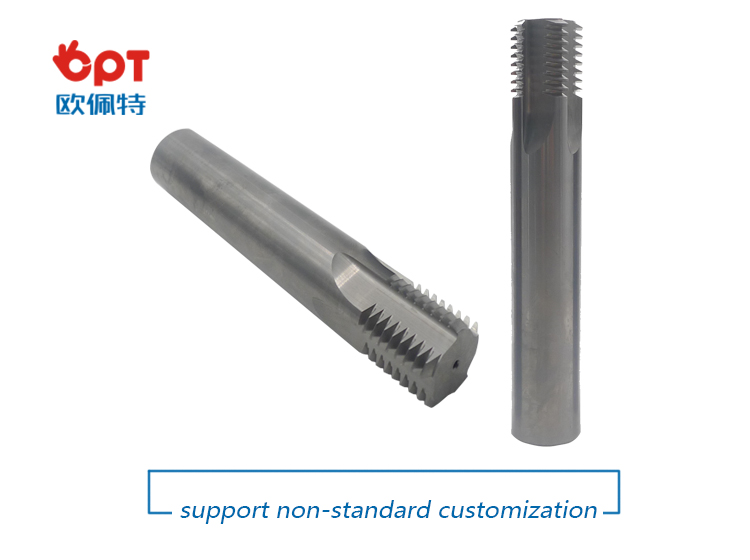
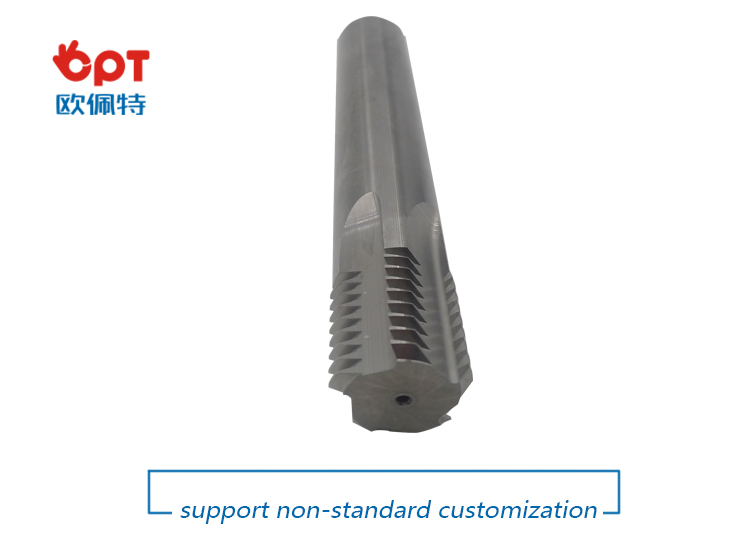
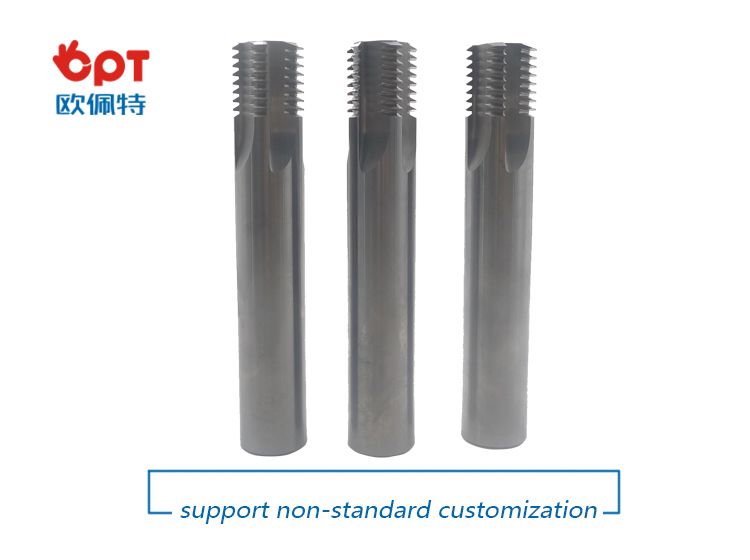
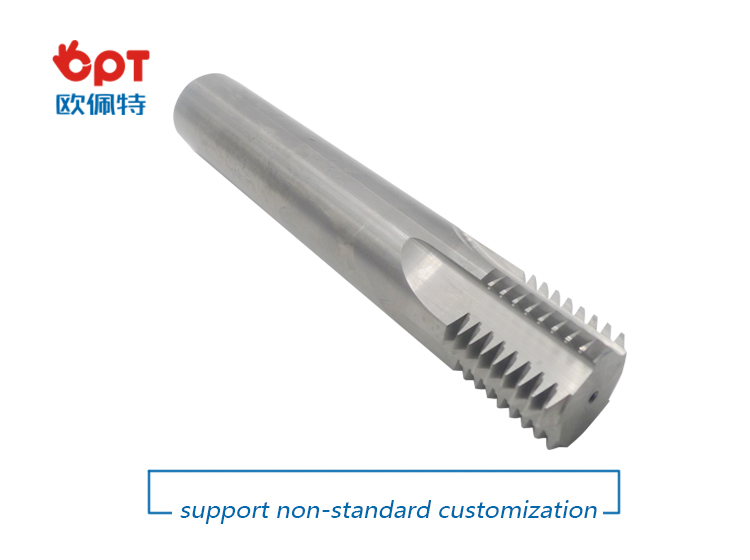
PRODUCTING PROGRESS:

PAYMENT AND DELIVERY:

PRODUCT EQUIPMENT :
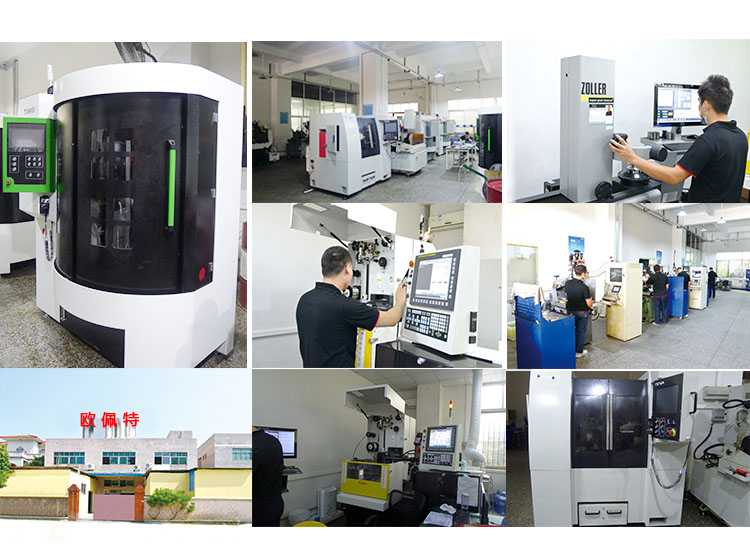
ABOUT US :
We are specialize in manufacturing PCD diamond tools and Carbide tools. Our major product inclulde PCD Inserts , PCD Reamers , PCD End Mills , PCD Taps, Cabide Inserts, Carbide Drills , Carbide Reams, Taps etc.,
We also offered customized cutting tools per drawings, and provide package according to customer requirements. We manufacture a series range of cutting tools for machining of Cast iron, Aluminium alloy and Non-Ferros metal, it is widely used in all major sectors like Automobiles, Engineering, Aerospace, Aviation and 3C industry. Premium quality of raw material is used in the production and strict examination during processing with advanced equipment, so our client are satisfied with our reliable quality and on-time delivery.
Our best selling of cutting tools include PCD Inserts, PCD End Mill , PCD Ball Nose Mill, PCD Reamer , Carbide Taps , Carbide End Mill, Special Form Cutter and many more. For these years we have been made a large forward in the technologies of manufacturing cutting tools. With high quality on performance and price, our product sells well both on domestic and overseas market. And we will always focus on the quality and best service, to make long business relationship.
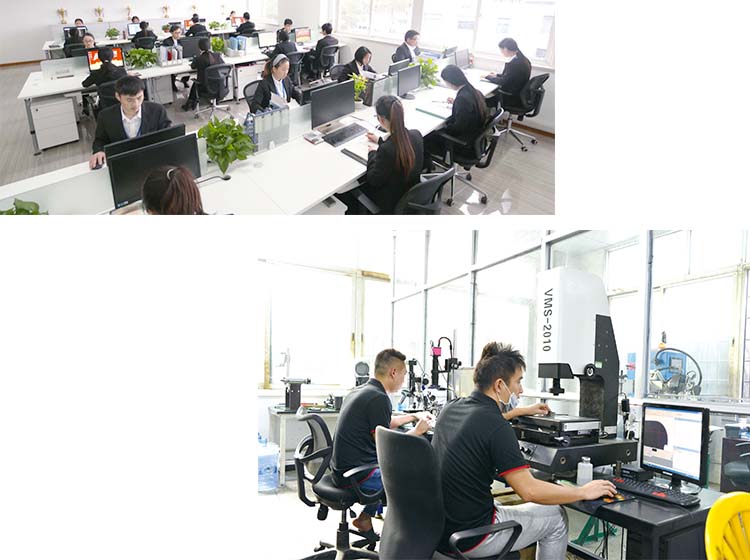
quanlity control:
We have dedicated team of quality control and precise equipment to keep good and stable performance for our products and processing services.

PCD Thread Milling Cutter
Thread Milling Cutter,Thread Mill,Thread Mill Cutter,Thread Mill Tool
OPT Cutting Tools Co., Ltd. , https://www.optdiamondtools.com